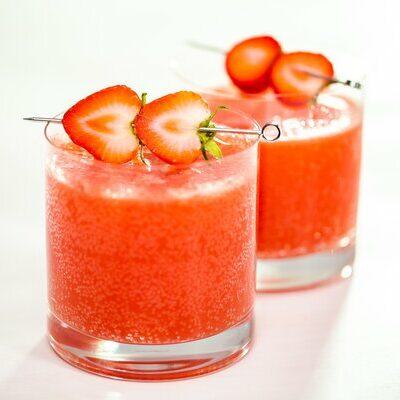
Dubonnet
What is Dubonnet?
Dubonnet is a type of aperitif, and is considered to be a quinquina. These drinks were traditionally used to treat malaria because they contain cinchona bark, which produces quinine. Made from a base of wine, dubonnet also contains herbs and spices, which makes the drink spicy and fruity.
- It is also used in cocktails.
- This drink is best known for being the favored drink of the late Queen of England and also has a Royal Warrant, despite being of French origin.
Some of the most popular cocktails using this aperitif are:
- Jack London Martini
- The Opera Cocktail
- Dubonnet & Gin
- Dubonnet Royale
- Dubonnet Manhattan
- Dubonnet Fizz
- Napoleon
Origin of dubonnet
The colonial period saw European troops sent off to far-off lands, where many died of malaria. When they discovered that quinine could treat this disease, the European governments mandated the use of this treatment. However, due the bitter taste of this medicine, the soldiers often refused to take it and ended up falling sick and often even dying.
Therefore, the French government decided to create a tastier quinine product. It was ultimately Joseph Dubonnet, a chemist from Paris, who created this drink, which proved to be popular. The drink became widespread even outside military circles.
Nutrition
Nutritional profile for dubonnet (1 glass). Dubonnet generally uses red wine, which contains a number of polyphenols such as resveratrol, anthocyanins, catechins, and tannins, which are beneficial for health. Resveratrol, especially, benefits cardiac health. Regular and moderate consumption of red wine can decrease the risk of cancers. Also, it is effective in reducing the prevalence of blood clots and thrombi.
Additionally, the spices in this drink have a host of health benefits. Many spices have antioxidant, anti-microbial, and anti-inflammatory effects as well as potential protection against cardiovascular disease, neurodegeneration, type 2 diabetes, and cancer. Moreover, the cinchona bark or quinine in the drink helps alleviate malarial fevers.
Nonetheless, overconsumption of alcohol can result in major health complications. These include obesity, change in the brain’s functioning patterns, liver cirrhosis, pancreatitis, heart problems, strokes, different types of cancers, as well as impact on general overall immunity.
Commercial production
The Dubonnet brand today belongs to the Pernot Ricard company, which bought it in the 1970s. For this drink’s production, many different varieties of grapes such as muscat, grenache, Carignan, and macabeo are used. First, the grapes are pressed and juice is extracted. Instead of fermenting, neutral base alcohol is added to the juice and aged in oak barrels. Spices such as cocoa, orange peel, cinnamon, elderflower, chamomile, green coffee, Colombo spice mix, and quinine are added to the juice by filtering it through percolators containing these ingredients.
Then, the different flavors are blended together in correct proportions. The alcohol content of the drink varies from 14 to 21 percent ABV. This drink must be stored in the refrigerator once opened. It will remain flavorful for up to 2 months.
Dubonnet recipes
Dubonnet is a spiced wine used in preparing different types of cocktails. Due to its spicy flavor, it is also often used in desserts and baked goods. Here are a few recipes:
- Kiss Cocktail
- The Queen’s Cocktail
- Cocktail No. 1
- Tres Jolie
- Opera
- Dubonnet Royale
- Princess Mary’s Pride
- Fat Like Buddha
- Napoleon
- Blackthorn
- Arnaud’s Special
- Bushranger
- Lemon Drizzle Cake
- Jubilee Bundt Cake
FDA regulations
Red wine is defined as wine produced by the normal alcoholic fermentation of the juice of grapes and is identified by color. There is not current standard of identity for this aperitif.
References
Lucy Davidson, Dubonnet: The French Aperitif Invented For Soldiers, History Hit, https://www.historyhit.com/dubonnet-the-french-aperitif-invented-for-soldiers/
Dubonnet Red, Difford’s Guide for Discerning Drinkers, https://www.diffordsguide.com/beer-wine-spirits/856/dubonnet-red
Vázquez-Fresno, Rosa et al. “Herbs and Spices- Biomarkers of Intake Based on Human Intervention Studies – A Systematic Review.” Genes & nutrition vol. 14 18. 22 May. 2019, doi:10.1186/s12263-019-0636-8, https://www.ncbi.nlm.nih.gov/pmc/articles/PMC6532192/
Snopek, Lukas et al. “Contribution of Red Wine Consumption to Human Health Protection.” Molecules (Basel, Switzerland) vol. 23,7 1684. 11 Jul. 2018, doi:10.3390/molecules23071684, https://www.ncbi.nlm.nih.gov/pmc/articles/PMC6099584/
National Institute of Alcohol Abuse and Alcoholism, Alcohol’s Effects on the Body, https://www.niaaa.nih.gov/alcohols-effects-health/alcohols-effects-body
